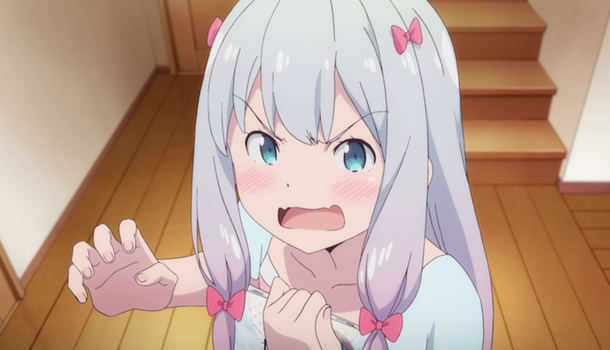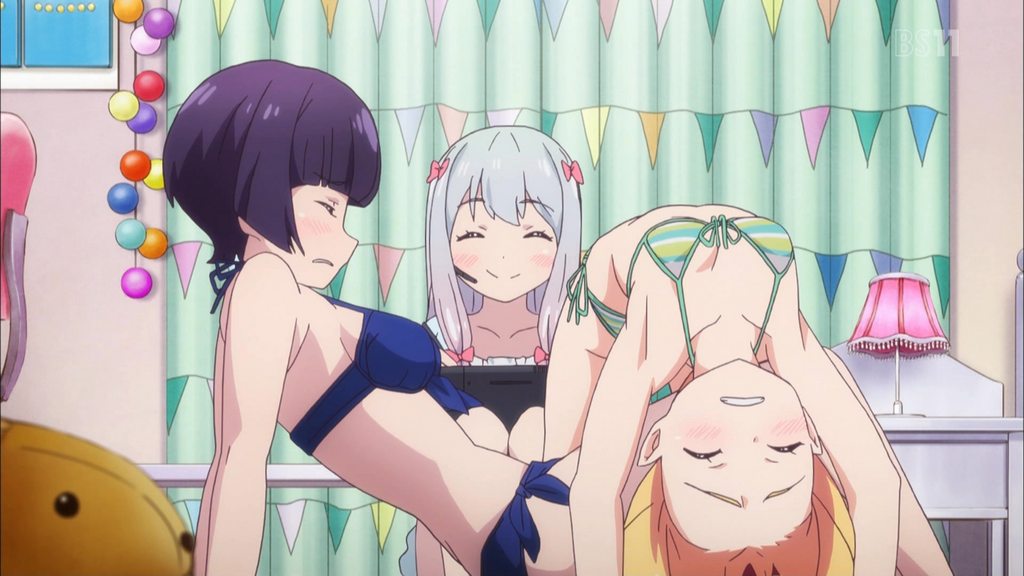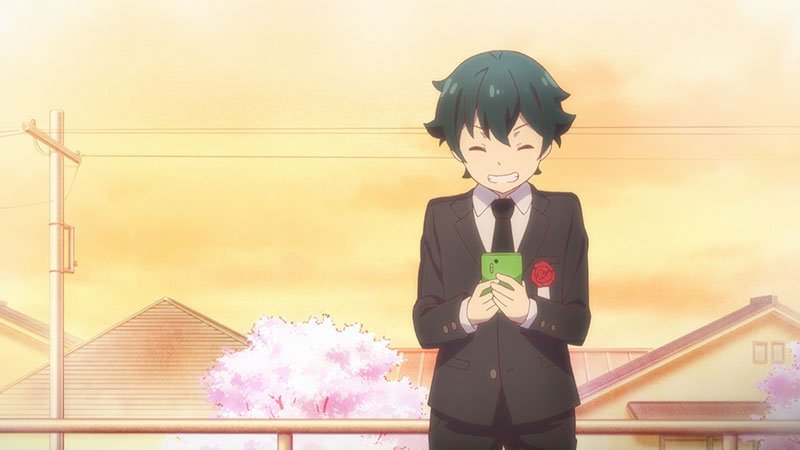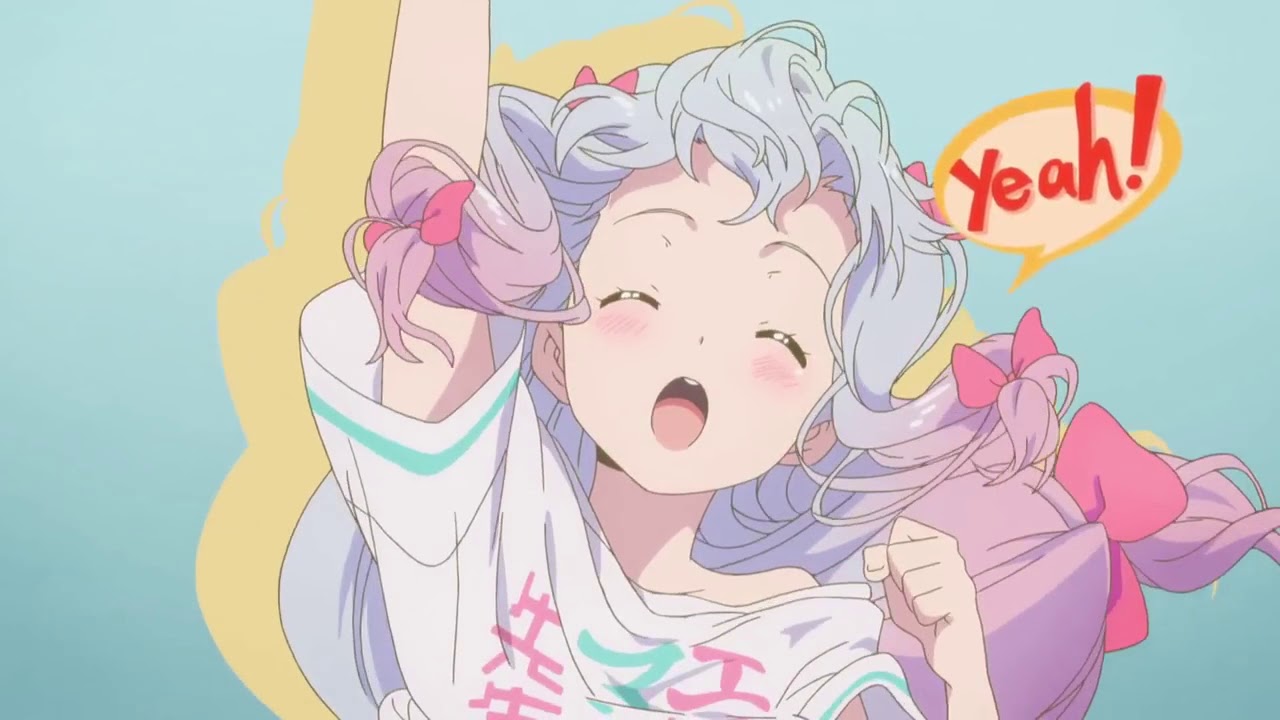
Written by Tom Mcllroy on 23 May 2020
Distributor MVM • Certificate 15 • Price £19.99
Back when I reviewed Eromanga Sensei Part 1, I said that it felt as if the show had missed its mark; it seemed so interested in courting fan-service that it largely failed to do anything remarkable with its setting - that being the rather nuanced world of light novels and their writers. Having watched Part 2, it seems like the show might have agreed with me on that one. Over the course of just another six episodes, it tries to inject a much more emotional and thoughtful tone into what is undeniably an overtly harem anime; exactly the sort of thing I was hoping for. And yet, it all comes a little too late, leaving the show at a bit of a crossroads that will likely dissatisfy many.
One of the glaring reasons for this is that Eromanga Sensei has far too many characters than it knows what to do with. In its original light novel format, this might have felt like less of a problem but, in the anime, it’s clear that the plot can’t manoeuvre around ten or so characters, certainly not in the space of its final six episodes. So, in an attempt to find some much-needed breathing room, it drops a few of them altogether. On one level, this shows how superfluous some of Eromanga Sensei’s cast clearly were, Megumi being a clear example. However, in a bizarre move, it also chooses to relegate some rather interesting characters, such as Ayame, Masamune’s editor, and Tomoe, his friend from the local bookstore. Fans of Bakuman will know just how important characters like these can be, not only for the professional growth of the central characters, but also as a way to explain important concepts to the audience. Having Ayame whisked off stage-left shows that the series is quite content to double down on being a harem first and a light novel-themed comedy second. Given how it handles the former, I can't say it was the right one.

That all said, my point is that the show could have done with fewer characters from the beginning. Part 2 thankfully doesn’t introduce any new ones, which not only gives it a much more comfortable pace, but also the breathing room to develop character-arcs, some of which are actually quite interesting. For example, across all of the relationships, we get to see how the acts of writing and reading light novels not only help our characters to communicate in ways that they can’t face-to-face, but also to connect with one another through a medium that successfully transcends traditional social barriers - whether it be age, location or background. That theme really comes to the fore with Masamune and Sagiri’s relationship which, despite still being awkward to watch at times, does take on a far more wholesome tone towards the end of the show. We discover how they first met through Masamune’s writing and how their relationship is actually founded far more on professional respect than we first thought - something I wish we could have seen much, much earlier in show.

However, the show’s harem remains very much at its core and, despite my reservations about that, it does handle it much better in this second half. Whereas before, the fan-service was spontaneous, and blatantly gratuitous at times, here it at least has some emotional weight behind it. That doesn’t completely make up for the fact that watching love blossom between two adoptive siblings can be uncomfortable at the best of times, but it does at least ground it in something else other than panty-shots. Still, though, I stick by what I said in my earlier review; other shows - Food Wars being a great example - have balanced their interesting setting and harem fan-service far more adeptly than this show has. As such, it makes Eromanga Sensei really hard to recommend when it half-heartedly attempts to catch up at the last minute, and pleases no-one as a result.
That all said, the series is still very nice to watch; it’s got a great visual style and A1 pictures have clearly thought hard about bringing its light novel roots to life. In addition, the show’s opening and closing sequences - the same from Part 1 - remain fun, likeable, and cleverly animated. And yet, I think those sequences also illustrate the fatal flaw of the series.

The show’s close, in particular, is a really uplifting sequence which captures Sagiri’s blossoming self-confidence, transforming from home-bound NEET into someone far more comfortable in her own skin. Similarly, the show’s opening is a great collage of her's and Masamune’s lives together as a writer/artist pair, while showing off the host of characters that will help them to grow and develop, both professionally and personally. And yet, at the climax of both, we don’t get that traditional staring at the sunshine moment, as both look into the destiny that awaits them. Nor do we close with Sagiri relishing her newfound self-assurance. Instead, we're forced to linger on the romantic sub-text between them; their sexual attraction in the opening, and their fan-service mishaps in the closing, and it just feels as jarring thematically as it is visually.
On reflection, I feel I can't honestly say that Eromanga Sensei has missed it's mark; I’m just not its target audience, and there is much to enjoy if you are looking for a well-animated series that is cheeky but cheerful. And yet, it’s clear that it also has a bit of a reputation in the anime community, which hasn't abated with the show's recent OVA releases and VR games, and that makes me feel far more confident saying that it’s probably one that you can gloss over. In the end, Eromanga Sensei sounds fine on paper, and it certainly did so as a light novel, but I can't help feeling that maybe that's how it should have stayed.
by Ross Locksley on 21 Dec 2025
by Ross Locksley on 25 Nov 2025
by Ross Locksley on 24 Nov 2025
by Ross Locksley on 11 Nov 2025
by Ross Locksley on 08 Nov 2025
by Ross Locksley on 07 Nov 2025
by Ross Locksley on 05 Nov 2025
by Jamie Morris on 27 Oct 2025